A good bath does not only bring a lot of pleasure, but also has a positive effect on health. Light, hot steam is the result of a competently built stove. Stones in the steam room are able to accumulate heat and slowly give it away. Correctly selected breeds interact with water to fill the room with useful microelements, an amazing aroma, contributing to the prevention of various diseases. To achieve this effect, one can only know the features of minerals, their ability to heat transfer. They should have a certain strength, high heat capacity, meet the requirements of environmental safety and emphasize the aesthetic component of the premises. It is important to be able to understand the healing properties of a stone, so that the effectiveness of bath procedures is maximum.
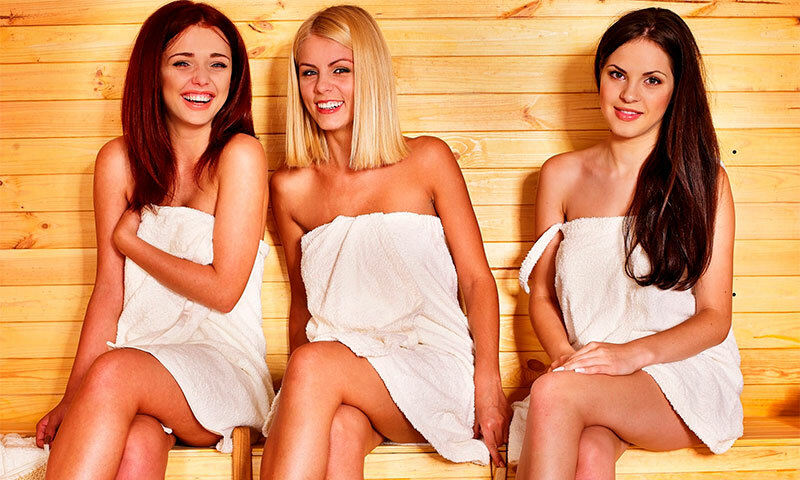
Contents:
- Types of stones for the sauna
- Parameters of the choice of stones for the bath
- What stones for the bath choose
- How much are the stones for the bath
Types of stones for the sauna
There are a lot of rocks in nature, but only a few are suitable for use in the bath. When choosing a stone, it is important to thoroughly study the characteristics of each mineral. All of them have certain merits and demerits that must be taken into account in order not to make a mistake and get the expected result.
Jadeite
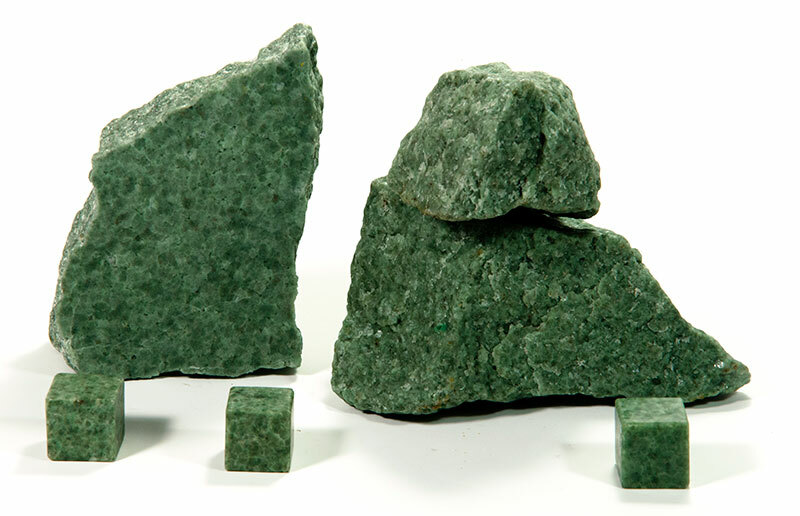
It is considered one of the best for a bath. It is a semiprecious mineral of greenish color.
Pros:
- High density, allowing you to withstand sudden temperature changes.
- Strength. Jadeite does not crumble and does not crack.
- Long service life.
- Low moisture absorption coefficient.
- Can maintain heat for a long time.
- The steam produced by the reaction with water positively affects all organs and systems, improving the structure of the blood, normalizing the pressure, reducing rheumatic discomfort. Useful for diseases of the spine.
Cons:
- The price is too high. Therefore, usually jadeite is placed in the last row on top of cheaper breeds.
- At home, it is advisable to use it in chopped form.
Talcochlorite
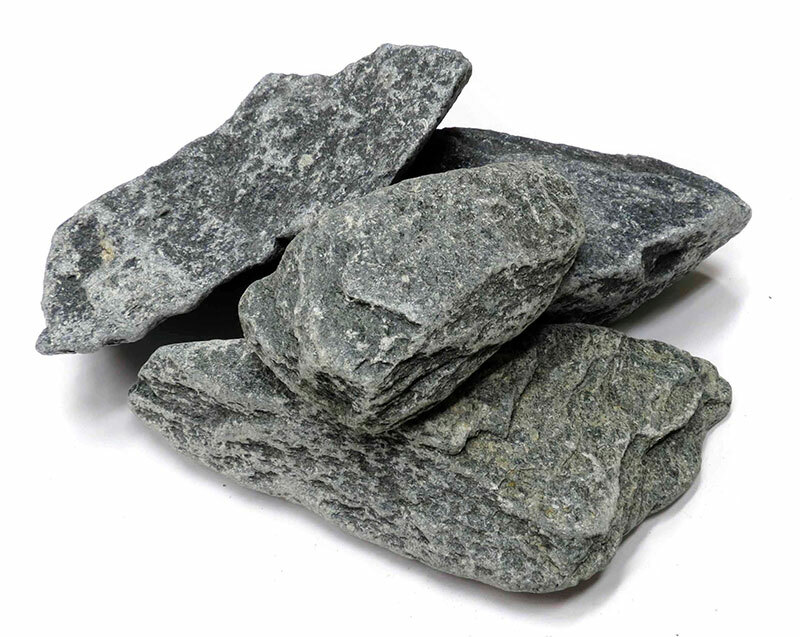
A thermally stable mineral that can be easily processed. Has an absolutely smooth structure and gray color of different shades with a muted frosted luster.
Pros:
- High content of nutrients released during heating and having a curative effect on the human body. Beneficial effect on the immune system, metabolic processes, normalizes blood pressure.
- Thermal radiation is very soft, due to which the evolved vapor is pleasant and airy.
Chemical neutrality. - Uniform and long-term heat release, during which no harmful impurities are released.
- Resistance to temperature changes.
Cons:
- High cost.
- Pretty big weight.
- Long warm-up process.
Gabbro-diabase
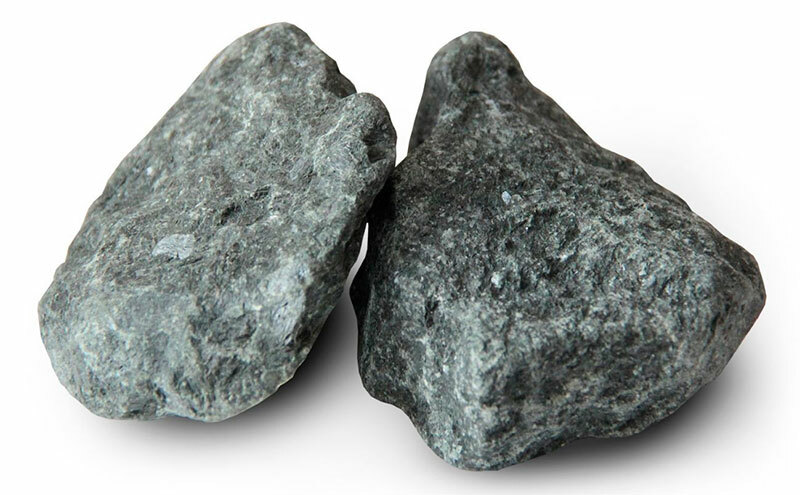
Intermediate link between gabbro and diabase rocks. The structure is medium-grained, massive, with no caverns and uniformity. Dark gray stones have an oval, slightly flattened shape.
Pros:
- Good warm-up.
- Ecological cleanliness, lack of harmful components.
- Low water absorption.
- Affordable price.
- Has a curative effect on the respiratory system, useful for asthmatics.
Cons:
- Slowly accumulates heat.
- Has a tendency to crack. It is necessary to routinely sort out the stones, removing the spoiled factions.
- May cause an unpleasant odor when heated.
- After the drops of essential oils, a deposit is formed on the surface of the stone.
- When laying gabbro-diabase, its ability to expand with heating should be taken into account.
Porphyrite
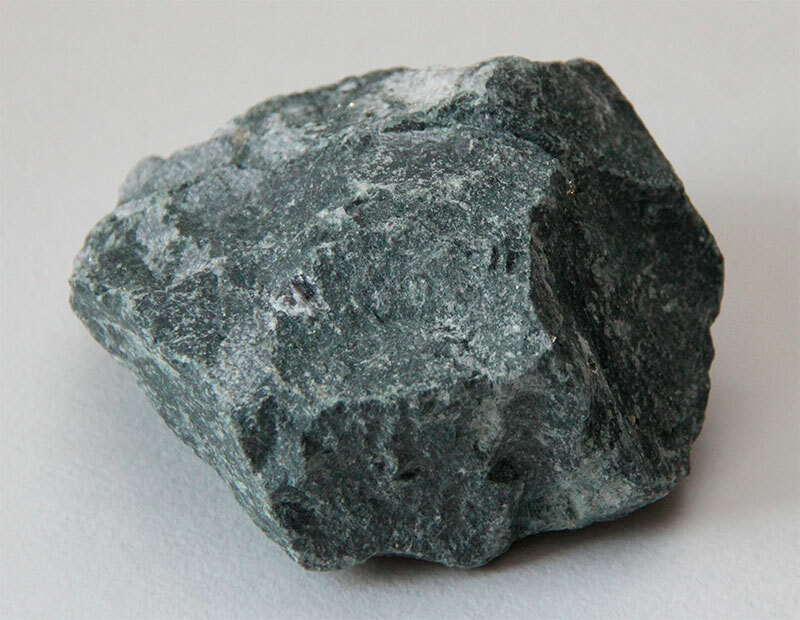
A stone of volcanic origin. Can have a green, gray, black color. When the mineral is purified, steam is obtained more dense before each heating.
Pros:
- Provides healing effect on the respiratory system, cleanses the skin, relieves headache.
- Has a high heat capacity. Maintains temperature.
- Very safe for health.
- Has a long service life without cracking and splitting.
Cons:
- When first heated, it emits a crash, which eventually disappears.
- Regular washing and cleaning are required.
Raspberry quartzite
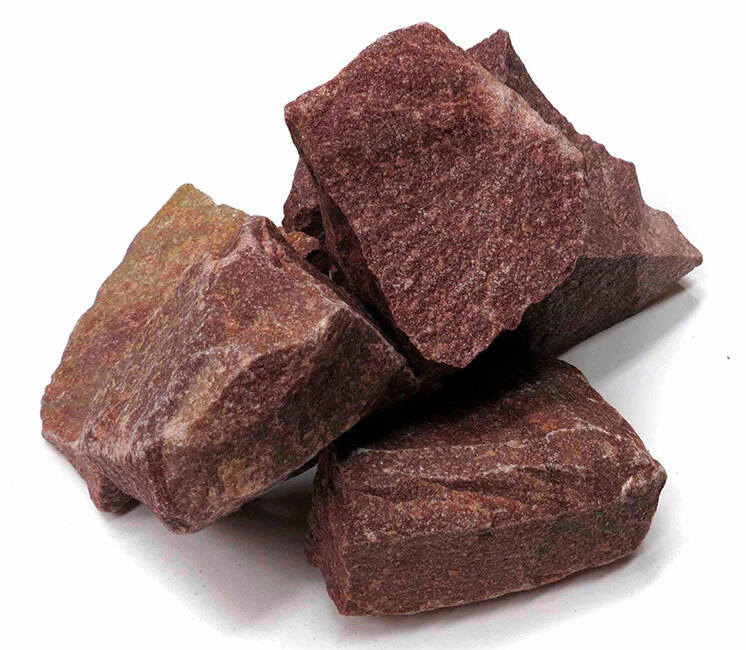
A mineral that can decorate any steam room due to its rich purple color. It forms during the crystallization of sandstones. Contains up to 90% quartz.
Pros:
- Has healing properties that help to normalize pressure, heal catarrhal diseases, rheumatism, muscle pain.
- Flame resistant - withstands heating up to 2700 ° C.
- It does not lose its appearance when used for a long time.
- Has a high density.
- Very durable and wear-resistant.
Cons:
- Due to its high strength, the mineral is difficult to process, so it can only be purchased in chipped form.
- Raspberry quartz is not cheap. Like jadeite, it usually fits in the top row.
Jade
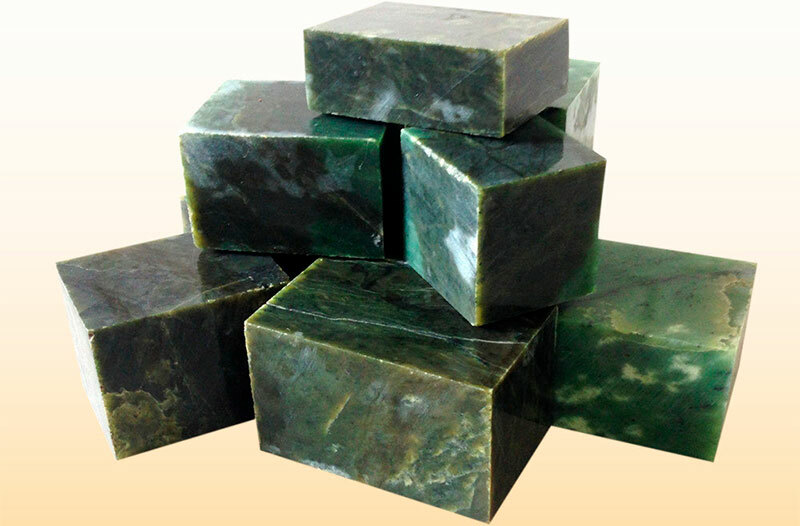
Semi-precious stone of green color, which is a close relative of jadeite.
Pros:
- Due to the high viscosity, it keeps the heat well.
- Possesses the ability to structure water, positively influence the human biofield.
- Vapors formed by reaction with water, have a curative effect on the respiratory system, digestive tract, purify the body of toxins and toxins, normalize the pressure.
- High degree of strength.
Minuses:
- The mineral is very expensive, so it almost never occurs in stores.
- It is impossible to split the stone by hand.
White quartz
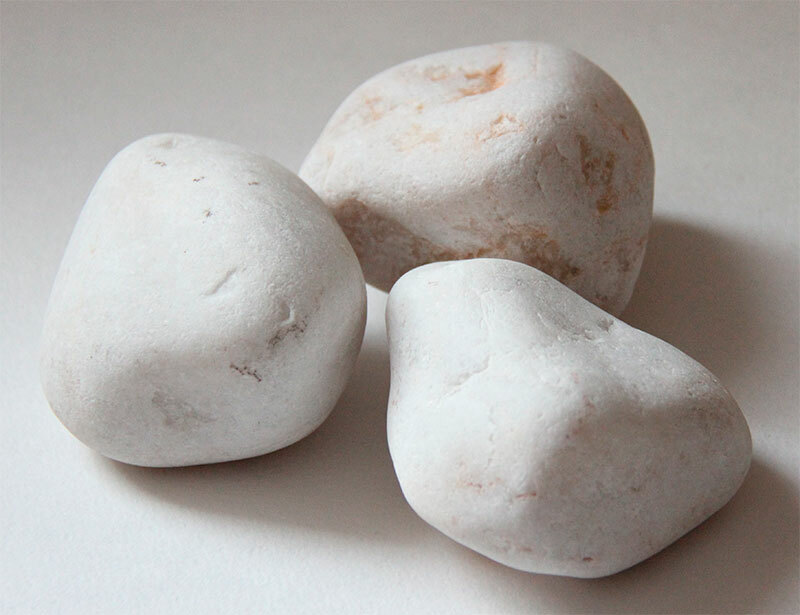
A translucent stone, composed of oxygen and silicon. With a sharp cooling, after getting to the hot stove of ice water, it emits pure ozone. Among true connoisseurs of the bath is the most popular mineral. Pros:
- Quartz has the ability to purify the breath. In this case, the therapeutic effect lasts a few days after the adoption of bath procedures.
- The ozone released by it has a rejuvenating effect on the body.
- Looks in the oven very attractive.
- Ecologically pure mineral.
Cons:
- Can burst, unable to withstand temperature changes.
- Rapidly cracking, resulting in often having to sort out the stones, removing the damaged ones.
- Rare and expensive mineral.
Stones for a bath are selected depending on their medicinal properties, the degree of strength, the planned budget. It is recommended to change the type of stones every 3-4 years, making bathing procedures more useful and diverse.
Parameters of the choice of stones for the bath
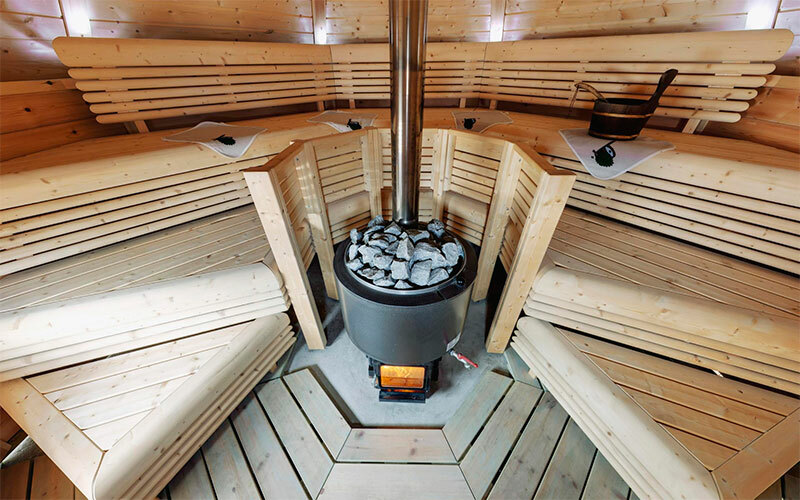
Selecting the breed for a bath is important to focus not only on its external appeal, but also on compliance with certain requirements.
Basic parameters when choosing stones for a bath:
1. Strength
Under the influence of temperature drop, the stone should not crack, crumble. Check the stability by scorching the mineral, then lowering it into cold water. You can make sure of the strength of the stone in the store by tapping one on the other.
2. The ability to store heat
This is one of the most important properties that stones should have for a bath. Checked by the specific gravity - the stone should be dense, heavy.
3. Homogeneous structure of
Another sign of a quality mineral. Various inclusions on the stone indicate the presence of impurities, which can be very poisonous. Standing out when heated in the surrounding air, they can cause irreparable harm to health.
4. Form
Round flat stones are preferred in form. They better retain heat, air circulation is faster. In addition, flat stones are better placed in the oven and have a more aesthetic appearance. The stones are selected the same size - large( from 70 to 130 mm in diameter) or small( 50-60 mm).Which one to choose depends on the size of the heater.
5. Environmentally friendly
Environmental cleanliness and safety are the most important criteria for selection. For example, stones collected near a railway bed are often impregnated with a poisonous composition, whose vapors, when heated, are in the air. Buying minerals in the store, you need to make sure that there is a mark on the package about the radiation control passed.
As a result of the constant heating of the stove, its contents deteriorate with time, and the heat output decreases by 20% every year. It is necessary to annually check the stones, washing them with water and replacing the new ones that have become unusable.
Which stones for the sauna to choose
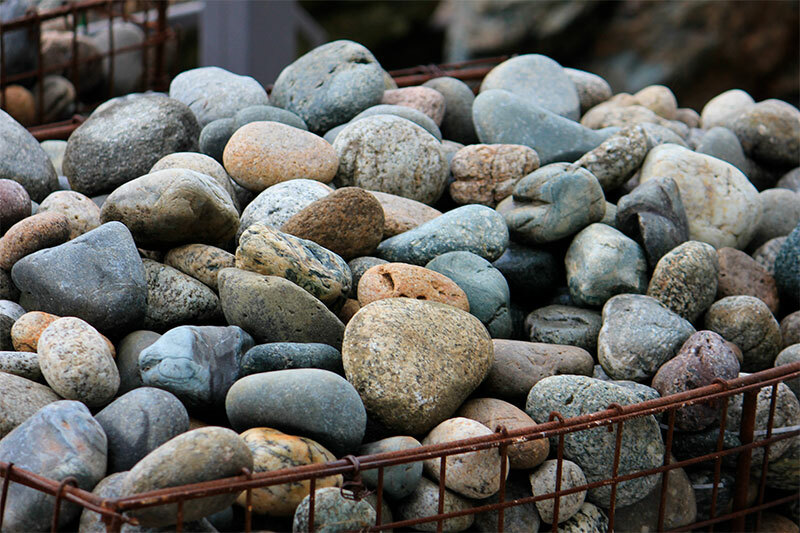
Depending on which sauna and in what type of sauna are the stones used, their choice is determined:
1. Russian bath
For a Russian bath, where there is a sharp drop in the supply of water to the heated stovetemperatures, stones should be selected especially strong, heat-resistant. Of rocks, jade, jadeite, pyroxenites will be the most suitable. Forming at a depth of many kilometers under high pressure, they have the necessary strength. Boulders that survived the passage of the glacier are also suitable. Useful stones for the bath are those that give a light, finely dispersed steam, keep the heat well, do not emit harmful substances and do not create dust.
2. Sauna
In a sauna, the tests falling on the share of stones are less severe. Can be used almost all the breeds that are suitable for the Russian bath. However, the greatest preference is given to talcochlorite.
3. Turkish bath
The peculiarity of the Turkish bath is that it is the coldest of all kinds of baths. The heater is not here. Steam generators are used to create steam. Therefore, the main use of stone - as a finishing material. The marble fits best for this purpose.
The stone is picked up in the sauna, taking into account the type of heater:
1. Closed
It is a chamber located inside the furnace. Although it does not directly contact the flame, it is strongly heated by external fire and furnace gases. As a result, the stones in it are prone to destruction. Therefore, use only those that have high strength. The longest surviving is jade, thanks to a fibrous, tangled structure that does not allow crumbling.
2. Open
A heater that is freely flushed with fire is the most extreme environment for stones. In addition to high temperature, they are affected by the oxidation processes that occur. Under such conditions, any, even the most durable breeds are destroyed. The most economical solution is to use inexpensive stones, regularly recycling and replacing the contents of the heater.
3. Electric furnaces
Both in Russian and in the Finnish sauna electric furnaces are successfully used. They have an increased sensitivity to the size of the minerals placed in it rather than to the rock. The optimal size of the stones is not more than 7 cm, and their installation is different. For electric stoves, all natural stones that have the necessary heat resistance and thermal conductivity for the sauna are suitable. The ability to withstand multiple heating and cooling cycles is characterized by jadeite, raspberry quartzite, talcochlorite, gabbro-diabase, and, of course, jade.
The life of the stone depends on the type of furnace. This indicator is also influenced by impurities, frequency of use, has a value and size.
How much are the stones for the bath
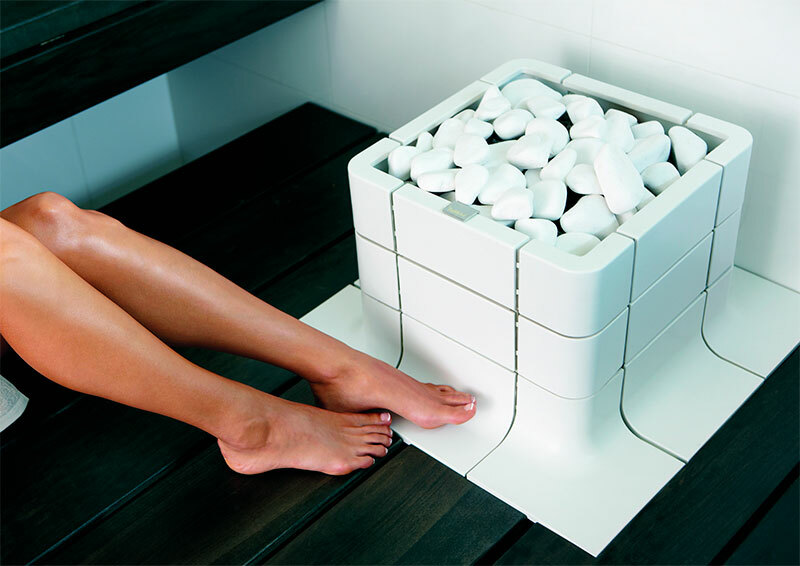
1. From the stones purchased in the store the cheapest - gabbro-diabase. They are recommended as a budget option, having suitable for the heater characteristics at quite affordable cost. The cause of the specific smell, which spreads from the gabbro-diabase when heated, are sulphides. You can avoid this trouble if you carefully examine the stones before buying. The price of gabbro-diabase ranges from 25 to 35 r per kilogram.
2. Jade and jadeite are available to a narrower range of consumers. The price for 1 kilogram can reach up to 250 rubles.
3. There is also a free option - the most common pebble, which can be collected from the nearest pond. It includes various breeds suitable for use in the bath. It can not boast of pebbles only by the presence of a curative effect on the body.
Adhering to certain rules, you can extend the life of the stones. To do this, do not water them abundantly, enough small portions, but in a shorter period of time. To avoid sharp claps, it is recommended to pour hot water on the stove.



